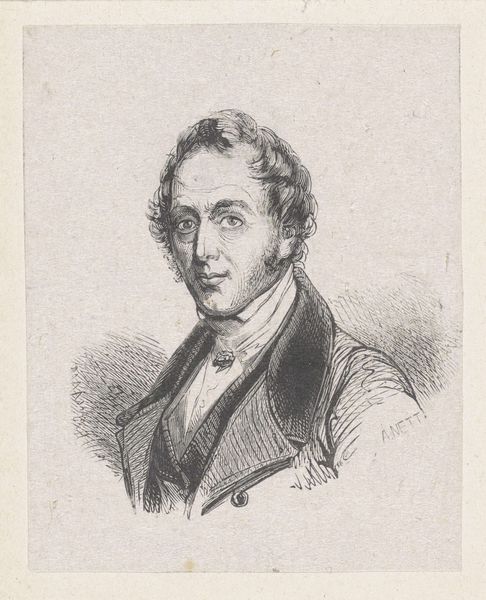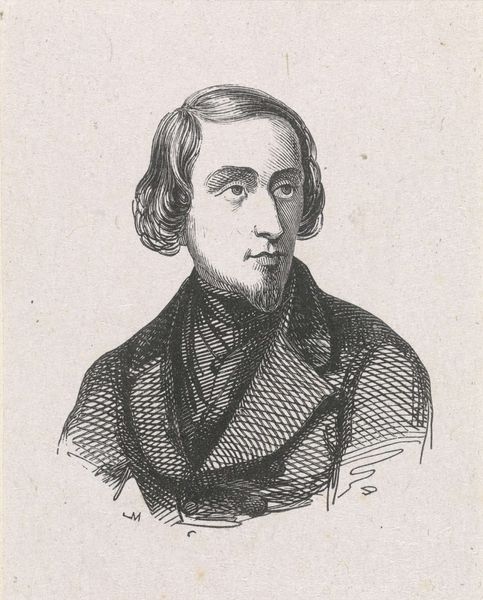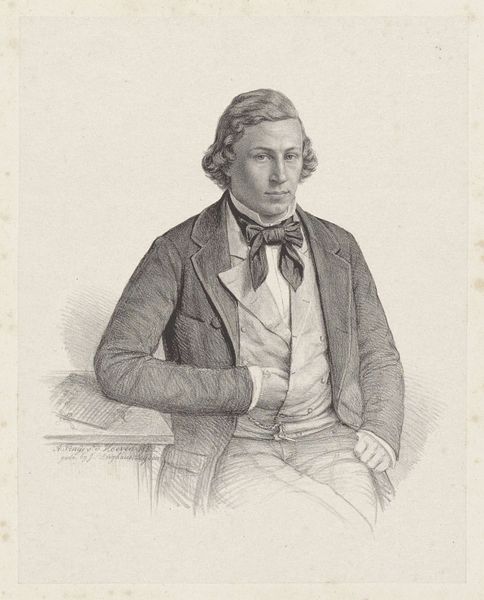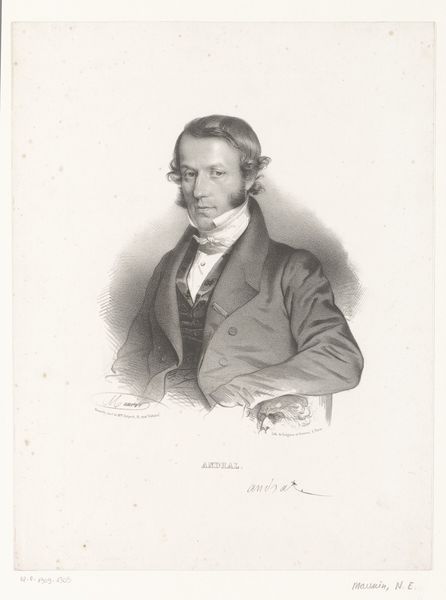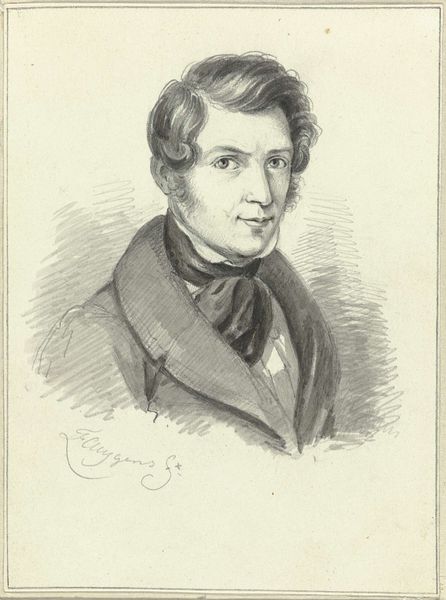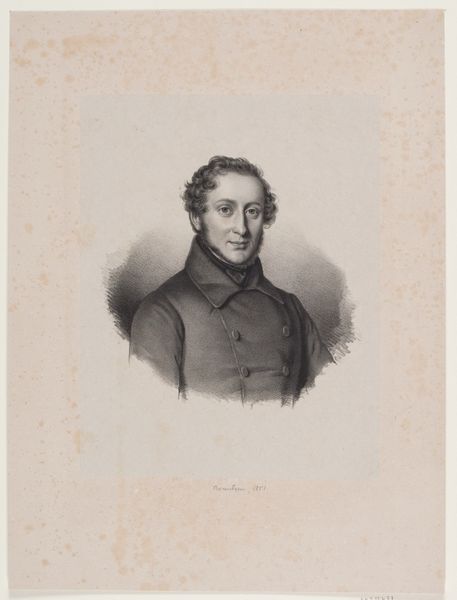
lithograph, print
#
portrait
#
lithograph
# print
#
romanticism
#
realism
Dimensions: 177 mm (height) x 129 mm (width) (bladmaal)
Editor: This is a lithograph titled "Wilhelm C. Holst," created in 1842 by Emil Ditlev Bærentzen. The fine stippling across the face and coat is incredible. It has a rather serious and stoic feel. How would you interpret this work from a formal perspective? Curator: The portrait commands attention through its precise tonal gradations, moving from light grays to near blacks, building form meticulously. Observe how the artist leverages the textural potential of lithography to render not just the likeness of Holst, but also the tactile quality of his quilted coat and softly curled hair. The symmetry achieved within the portrait’s composition contributes significantly to its stability and dignified presence. Do you see the deliberate arrangement of light and dark areas defining the subject? Editor: Yes, the strategic use of chiaroscuro seems to emphasize his facial features and the structured form of the jacket. It’s also interesting how the soft, almost blurry rendering of the hair contrasts with the crisp detail of the coat. It makes the texture stand out. Curator: Precisely. That controlled contrast highlights both the technique’s virtuosity and a conscious decision regarding how to portray texture versus form. The relatively simple pose directs all attention to Holst's gaze and meticulously detailed garments. This strategic formalism is evocative in and of itself. Editor: I see how concentrating on composition and technique helps reveal intentional choices about representation. Thank you. Curator: Indeed. Close attention to these formal elements teaches us not only to appreciate craft but also to discern expressive potential independent of subject.
Comments
No comments
Be the first to comment and join the conversation on the ultimate creative platform.
